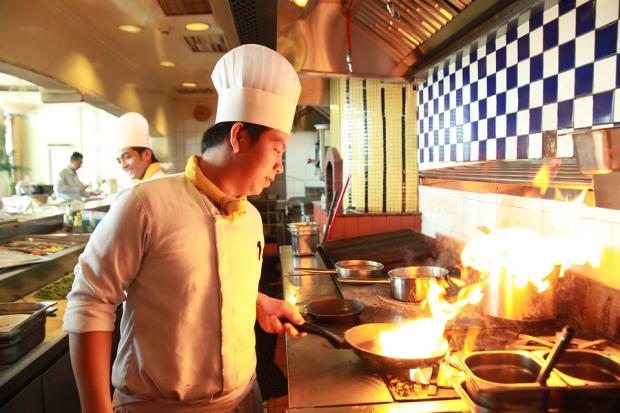The restaurant industry exhibited moderate growth in 2017. Per the National Restaurant Association (NRA), the industry generated $799 billion in revenues in the year, up 4.3% from 2016. However, this translates into a growth rate of just 1.7% when adjusted for inflation.
The industry remains on steady footing, thanks to the strategies adopted to counter headwinds currently hindering it. These include various sales building efforts, cost cuts, franchisee-based business models, loyalty programs and, most importantly, increased usage of technology.
Taking the past trends and long-term growth prospects of the industry into account, let’s explore the strategies in detail.

Current Economic Backdrop Favorable
A gradually improving U.S. economy as reflected in the rise in wages, record low jobless rate and upbeat consumer confidence should give restaurant stocks some push. In February, Consumer Confidence Index reached its highest level since 2000, after a modest increase in January. The index rose 6.5 points to 130.8. Notably, confidence remains high among consumers, and their expectations suggest that the economy will continue expanding at a solid pace in the near term.
We anticipate this positive sentiment to encourage consumers to dine out more and thereby arrest declining traffic. Moreover, it is to be noted that eating out is one of the items in the family budget that has grown manifold as households get a boost. This bodes well for the restaurant sector and is likely to keep investors’ appetite high for restaurants in the rest of 2018 and 2019.
Deploying Technology to Enhance Guest Experience
Technology at restaurants has become essential — more than ever before — given the troubles plaguing this space over the past few quarters. Hence, restaurant operators are going all guns blazing with their online and digital marketing activities. These will help them to cater to consumers’ increasing dependence on and penchant for online and mobile web technology and consequently lure them back.
While smartphone apps attract consumers, video menu boards in quick-service restaurants and tabletop devices speed up sales and ensure convenience. Further, restaurant operators rely on social media for promotions and incorporate Facebook (FB- Free Report) , online review sites, Twitter (TWTR – Free Report) and blogs aggressively into their marketing mix.
In fact, mobile ordering in particular is fast becoming a crucial part of many restaurants’ plans, given what it can bring in enhanced sales. This is because when using a phone to order their food, customers, on an average, tend to spend more and visit more often. Going forward, mobile ordering will form the crux of customers’ experience, rather than just being a point of differentiation.
Notably, pizza giants Domino’s andPapa John’s International (PZZA – Free Report) have been the industry bellwethers in the digital ordering space. In 2017, Domino’s AnyWare suite of ordering platforms that allow customers to order from various ordering apps and platforms such as Google Home, Facebook Messenger, Apple Watch, Amazon Echo, Twitter and via a Pizza emoji on text, grew significantly. Meanwhile, its digital loyalty program – Piece of the Pie Rewards – continues to contribute significantly to traffic gains.
Papa John’s aims to continue making investments in technology, focused on foundational improvements to its digital channels to increase order conversion rate, frequency and ticket average. Further, in 2018, Papa John’s aims to completely redesign its digital platform and solutions capabilities, leveraging enhanced data analytics and insights to ensure that its industry-leading platforms are sustainable, efficient and effective.
Though a few restaurants have managed to come along as far as the pizza chains, there are many who have advanced their own apps by leaps and bounds to attract more customers on the go.
The world’s largest coffee shop operator, Starbucks has secured a leading position in leveraging its mobile and digital assets and loyalty and e-commerce platforms to create more revenue streams. In fact, Starbucks’ mobile app is undoubtedly one of the most widely used mobile payment apps in the United States.













Leave A Comment